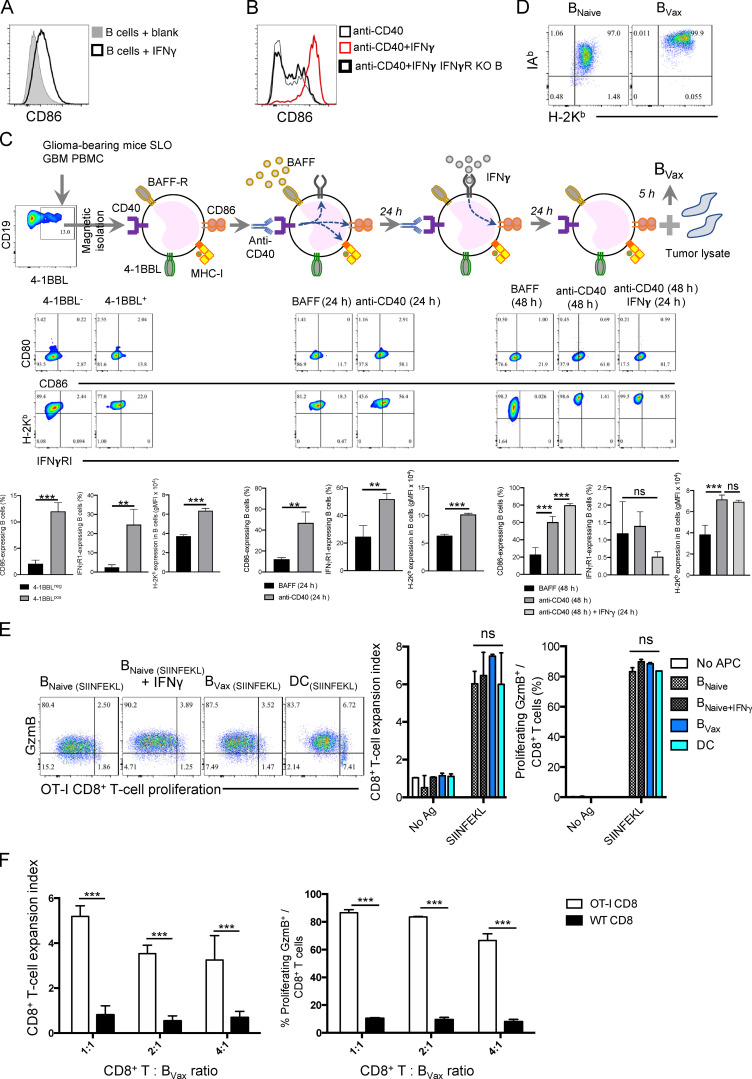Figure S2.
BVax generation. (A) Human B cells from PBMCs were treated with 10 U/ml IFNγ for 24 h. CD86 expression was assessed by flow cytometry. Representative histogram of three independent experiments. (B) Murine B cells from WT C57BL/6 or IFNγR–deficient (IFNγR KO) mice were incubated with 5 μg/ml CD40 activating Ab ± 10 U/ml IFNγ. Expression of CD86 was assessed by flow cytometry. Representative histogram of four independent experiments. (C) Stepwise schema of BVax generation in vitro. BVax were produced from 4-1BBL+ B cells isolated from tumor-bearing SLOs such as the spleen and deep and superficial CLNs. Cells were then activated with 5 μg/ml CD40 activating Ab and supplemented with 100 nM of B cell survival factor BAFF, which after 24 h allows the up-regulation of CD86, H-2Kb, and IFNγ receptor 1 (IFNγRI) compared with only BAFF-treated B cells. The addition of IFNγ for an additional 24 h allowed further up-regulation of CD86 compared with only anti-CD40–treated B cells. Histograms represent mean ± SD of n = 3 mice/treatment. gMFI, geometric mean fluorescence intensity. (D) BVax overexpress both IAb (MHC class II) and H-2Kb compared with only BAFF-treated B cells (BNaive). Flow cytometry dot plot representative of n = 4 mice/group. (E) B cell subsets (BNaive ± IFNγ and BVax) and DCs were tested for their ability to present SIINFEKL peptide to OT-I CD8+ T cells measured by cell proliferation and expression of intracellular GzmB. Representative experiment of three independent experiments performed in triplicate. (F) Same experiment as in E was performed using in addition CD8+ T cells from WT C57BL/6 mice as negative control. Differences among multiple groups were evaluated using one-way ANOVA with post hoc Tukey's multiple comparisons test. Histograms are shown as mean ± SD. Statistical significance is depicted as follows: *, P< 0.05; **, P< 0.01; ***, P< 0.001. ns, not statistically significant.

